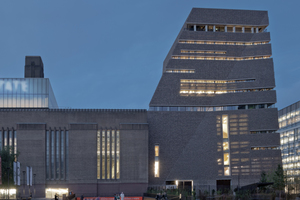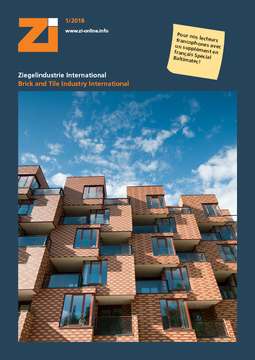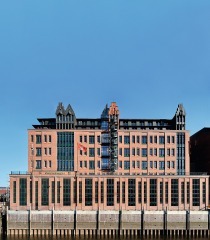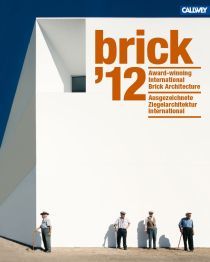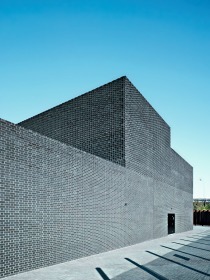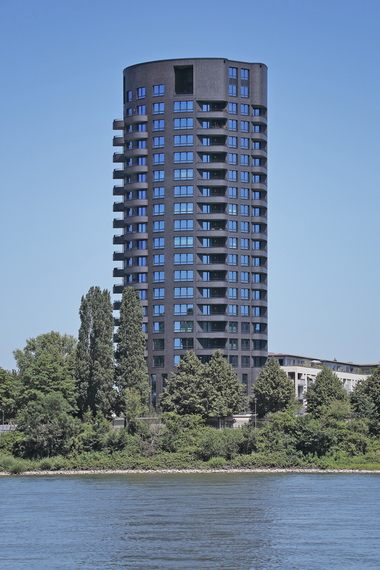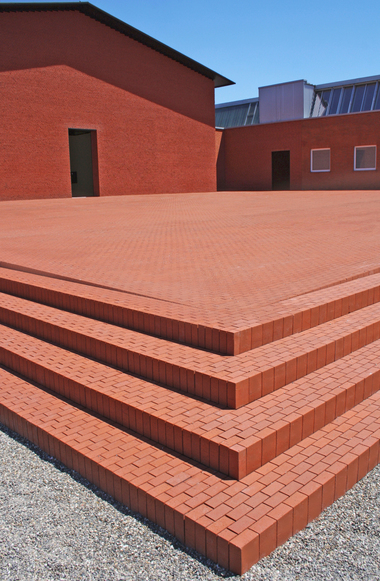Perforated brick screen
The façade draws its special measure of plasticity from the staggered, indented pattern of clinker bricks measuring 215 x 215 mm, by 69 mm high. The bricks were not laid in the conventional fashion, but assembled into modules composed of two mortar-joint bricks each and then masoned such as to yield a rear-ventilated façade.
In order to fit the masonry both horizontally and vertically onto the slanted three-dimensional shape of the building, the façade was subdivided into frames holding, in all, 336 000 bricks of 212 different varieties, attached in blocks to the framing. Five basic types of brick are used. Nor was the colour of the façade by any means an accident. For that, Herzog & de Meuron referred back to the existing building and cooperated with the manufacturer in developing a special kind of through-coloured ceramic body. Together with the offset bricks, the result is a vivacious interplay of light and shadows across the exterior walls of the new Tate Modern.

